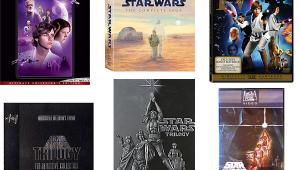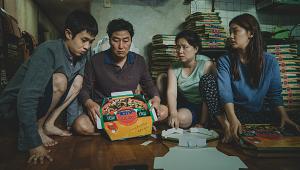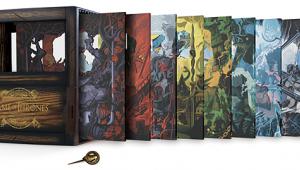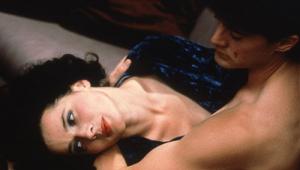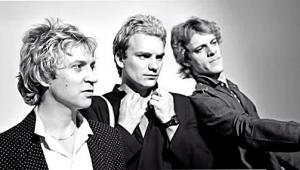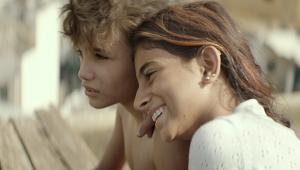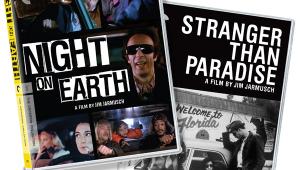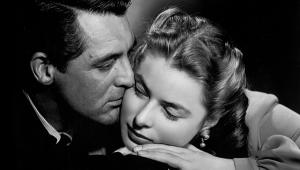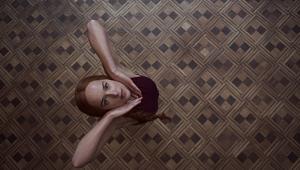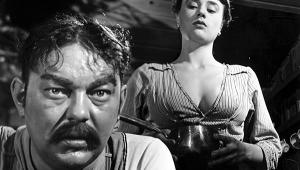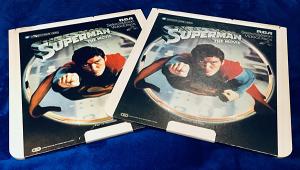The Lone Ranger
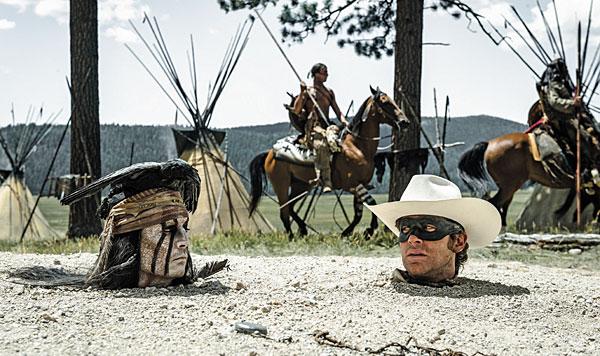
The story told by Tonto (Johnny Depp deadpanning under a layer of war paint providing much of the humor of the film) concerns prosecutor John Reid (Armie Hammer) who in 1869 sets off with a posse of Texas rangers to capture notorious bad man Butch Cavendish (William Fichtner) and his gang, only to be ambushed. Reid is the lone ranger to survive, saved by Tonto who joins the masked man in a search for vengeance. The cartoony, sketchy, mashup approach leaves out no Western archetype or cliché and includes frequent homages to much better films—Sergio Leone Spaghetti and other classic Westerns (including The Searchers!). It’s not only apt for the tall-tale/child’s-thinking setup but is surprisingly entertaining. The many action set pieces in an impressively good transfer and a glorious 7.1 soundtrack make for great home theater.
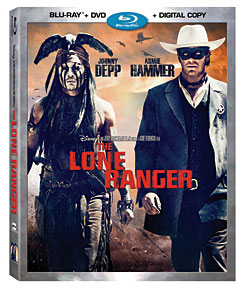 The picture was nominated for Oscars for visual effects and for makeup and hairstyling, and its transfer reveals all. Suitably, the color palette is slightly muted for the dusty Old West, but there are splashes of rich tones, as when a red balloon floats off or Helena Bonham Carter makes her cameo in a crimson wig and busty bustier as a one-legged whorehouse madam. The black outfits of Presbyterian train passengers are deep, and the Lone Ranger’s beautiful horse is a bright white. Detail is plentiful; all of the old Tonto’s wrinkles and his flaking makeup are visible. Craggy rock formations and textiles in outfits have tactile textures. Compositions in depth have dimension, and the figures and faces are solid and rounded—such as railroad track workers stretching back into the distance or the bad guys awaiting the train standing in fore-, mid-, and background spread across the screen à la High Noon.
The picture was nominated for Oscars for visual effects and for makeup and hairstyling, and its transfer reveals all. Suitably, the color palette is slightly muted for the dusty Old West, but there are splashes of rich tones, as when a red balloon floats off or Helena Bonham Carter makes her cameo in a crimson wig and busty bustier as a one-legged whorehouse madam. The black outfits of Presbyterian train passengers are deep, and the Lone Ranger’s beautiful horse is a bright white. Detail is plentiful; all of the old Tonto’s wrinkles and his flaking makeup are visible. Craggy rock formations and textiles in outfits have tactile textures. Compositions in depth have dimension, and the figures and faces are solid and rounded—such as railroad track workers stretching back into the distance or the bad guys awaiting the train standing in fore-, mid-, and background spread across the screen à la High Noon.
Surround and rear channels are in constant use with subtle, utterly clear, and highly convincing atmospherics and effects that immerse you in a landscape or in the action—particularly in the memorable-sounding railroad sequences. When someone runs along the top of the train car, it really seems like they’re overhead, more so as the Lone Ranger gallops from behind and over you. Effects pans are smooth, as when the engine and a buffalo herd all around it thunder diagonally through the room and off behind you or gunfire explodes and bullets ricochet densely all around. Hans Zimmer’s heavy-handed old-TV-style score (which also samples Ennio Morricone) flows well from all channels, while Gioachino Rossini’s “The William Tell Overture” sounds magnificent in the mix—full and open all about—and makes the action inspiring.
Three short featurettes cover cowboy boot camp—teaching the actors basic Western skills of ranglin’, ropin’, loadin’, shootin’, ’n’ gallopin’ to yer mark—Hammer’s tour of scenic Western locations like Monument Valley, and build- ing a railroad for the production. They’re surprisingly fun and informative.
Blu-Ray
Studio: Disney, 2013
Aspect Ratio: 2.40:1
Audio Format:
DTS-HD Master Audio 7.1
Length: 149 mins.
MPAA Rating: PG-13
Director: Gore Verbinski
Starring: Johnny Depp, Helena Bonham Carter, Armie Hammer


